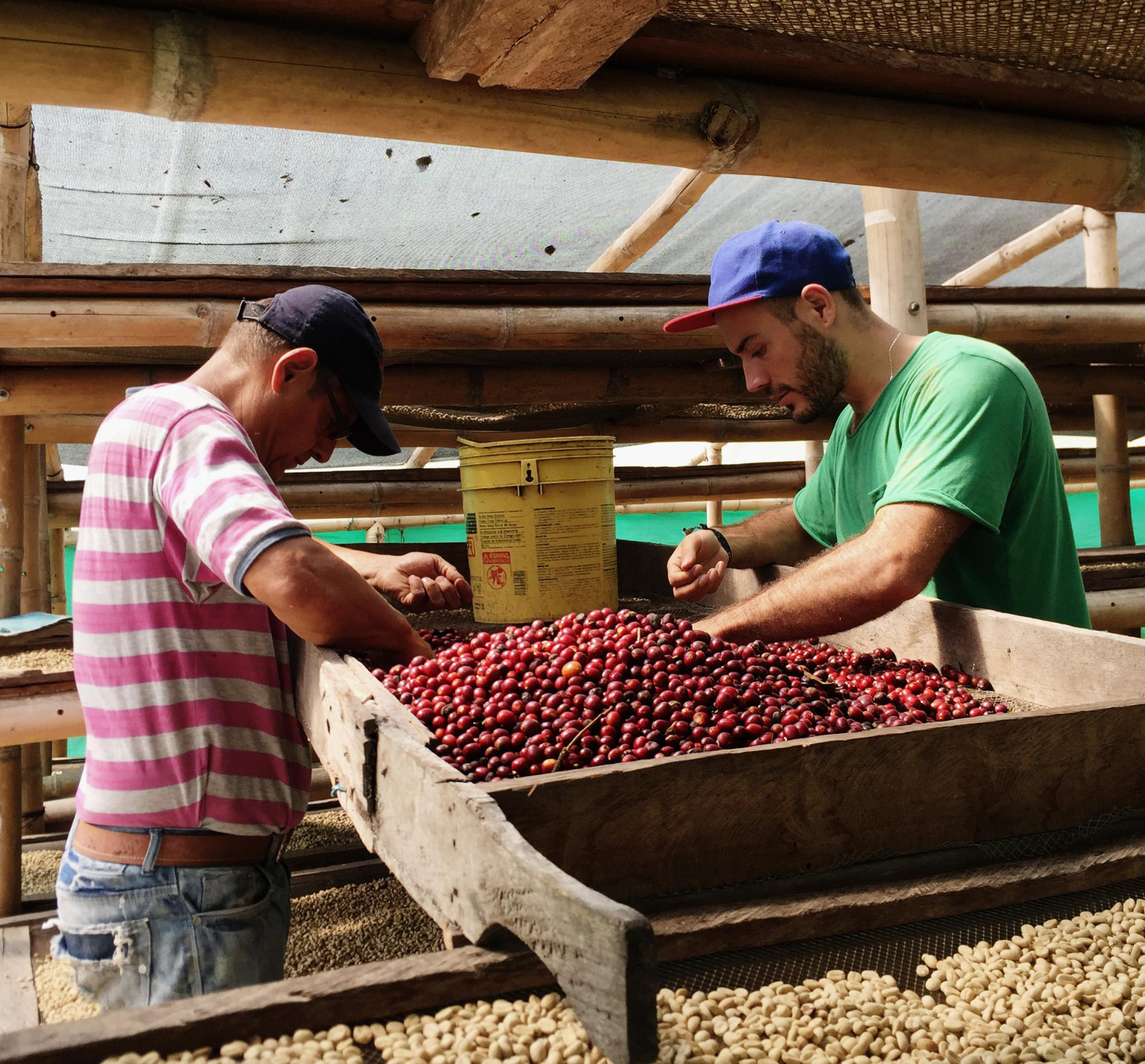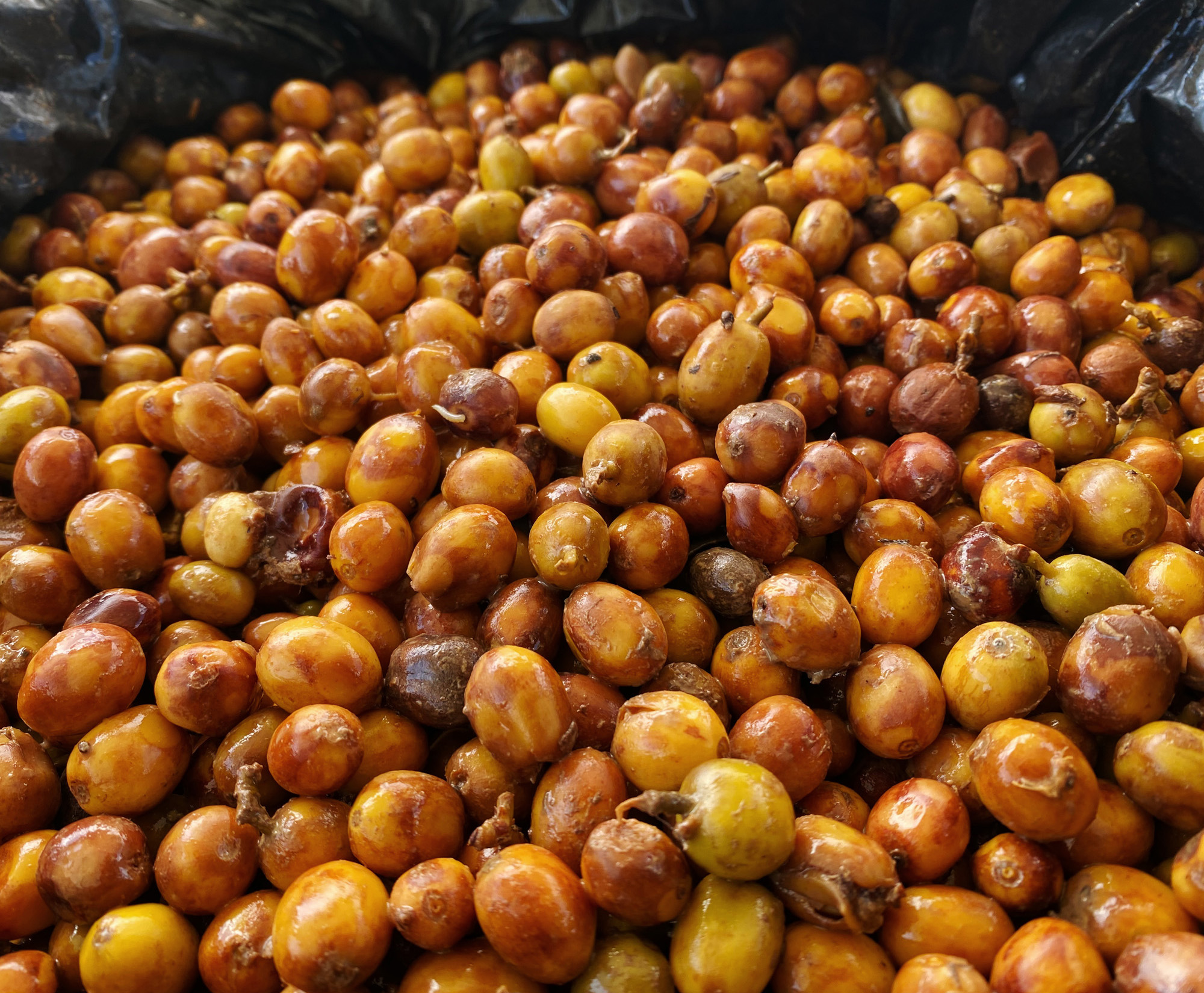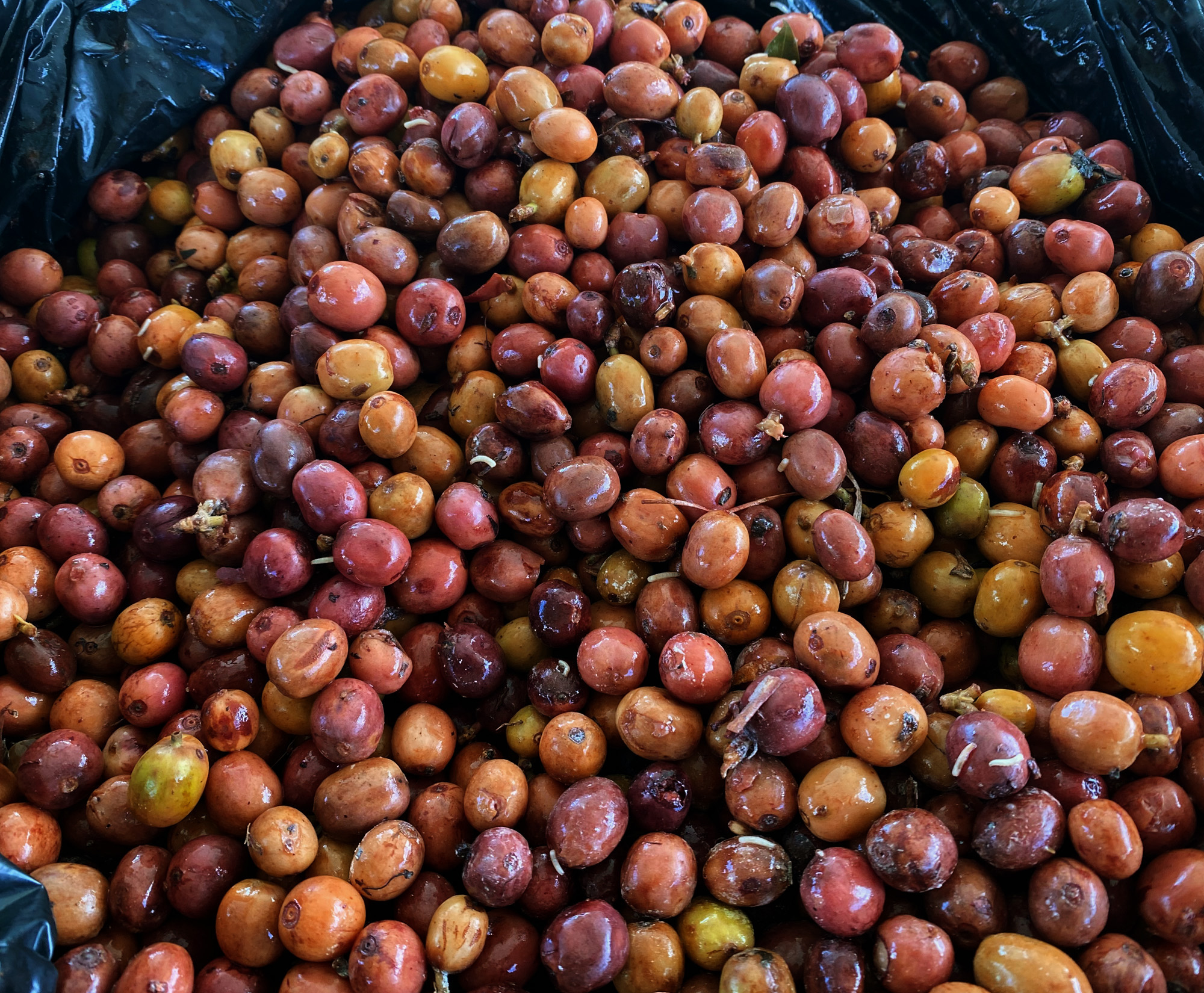In Colombia, producers are experimenting with longer and longer التخمير times, and somehow getting away with it. Colombia-based green buyer, coffee roaster, and BH Coach, Nikolai Fürst helped to develop a coffee this season that has been fermented for a total of 740 hours: a whole month of التخمير. Nikolai and his producer partner Omar Arango Tinoco at Finca San Luis slowed down التخمير by partially drying the coffee, which reduces microbial activity. They fermented whole cherries in GrainPro bags for 36 hours, then took them out and dried them for four days in the sun, before returning them to GrainPro bags for the final التخمير of 29 days. Drying the cherries in this way reduces the risk of mould, Nikolai says, and allows the coffee to develop some very distinctive flavours.
In this interview we spoke with Nikolai and this potentially record breaking coffee, and another fantastic long التخمير coffees he has collaborated on this season. One practice in particular we explore is the addition of raw cane sugar (rapadura) into the التخمير tanks.
 Omar Arango (left) and Nikolai Fürst (right) at Finca San Luis, Colombia.
Omar Arango (left) and Nikolai Fürst (right) at Finca San Luis, Colombia.
Cherries fermenting in plastic bags. البلاستيك bags such as GrainPro are a simple but effective way to exclude oxygen from التخمير.
Jem Challender: When it comes to long التخمير, how many hours is the beginning of ‘long’?
Nikolai Fürst: All of our coffees usually have one or two steps: The first one is almost always in coffee cherry and if pulped in mucilage or another one in cherry.
JC: Is there a term you and your producer partners use for this approach?
NF: No. We usually look to highlight ‘farm flavours’ through processing. Each partner farm from whom we buy coffee to roast for our brand describes it with one word, such as ‘funky’, ‘wild’, bold’, ‘classic’, or ‘floral’, so we look for ways to highlight those attributes. Some processes have names, some are just processes.
JC: What created the impetus to go longer in your fermentations?
NF: We found that starting التخمير/للأكسدة in coffee cherries generally gave us more body and sweetness. This is especially important when we’re working with varieties such as Castillo, Variedad Colombia, Cenicafe I, etc. Those hybrids tend to have vegetative, metallic flavours that can be hidden by extended fermentations.
JC: I seem to remember that the FNC had a policy of prohibiting natural processing. Do you know anything about that?
NF: The FNC was looking for a way to unify the Colombian flavour profile … with its standards for processing: Pick it, pulp it immediately, ferment/oxidise the cherries in mucilage for 12–24 hours. Remove the mucilage by washing the cherries with abundant water (Colombia is one of the water-richest countries); drying reduces the risk of off-flavours. This is the safest way to create the ‘classical Colombian’ flavour profile: chocolate, cane sugar, and citric notes. When coffees are left with mucilage or cherries and they are not moved enough during drying there’s a high risk for phenols, moulds, etc. that produce strong off-flavours. [This standardised processing is an easy and ‘safe’ way for them to be sure [of the quality] and to not have to cup every time they receive coffee.
JC: How would you describe the flavour of some of the long-التخمير coffees you have been involved with?
NF: Basically, we have to differentiate between dry/wet التخمير و للأكسدة.
- A first step in coffee cherry highlights usually sweetness and body.
- Submerged التخمير tends to achieve a richer body.
- جاف التخمير (i.e., anaerobic) tends to produce more alcoholic, delicate flavours.
- Oxidation produces vinegar at the beginning, which is linked to more fruitiness/ funkiness.
JC: Have you or has Omar Arango Tinoco looked into getting microbiota mapping done at Finca San Luis? To what uses would you put that information if it was available?
NF: Not yet. We measured some strains on the Capilla del Rosario farm, but we are achieving pretty similar results when we try to maintain التخمير ambiences such as submerged, dry, للأكسدة, anaerobic…. So, we haven’t had the need yet. But we’re working on isolating some microorganisms and will try to inoculate in order to more deeply understand what’s going on. 😃





0 تعليق